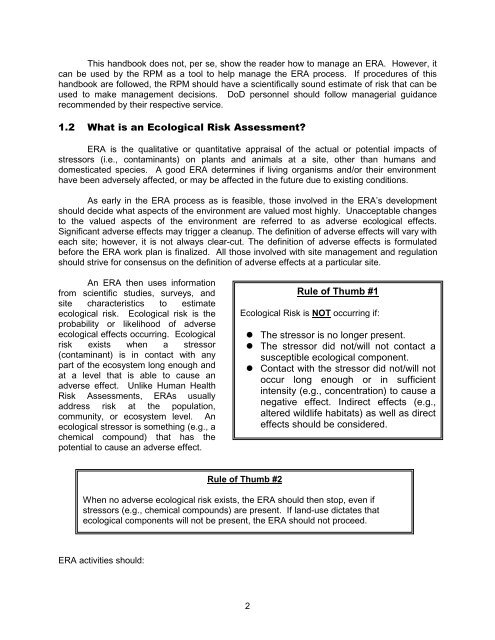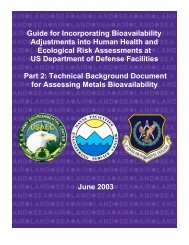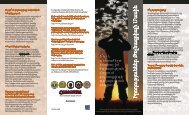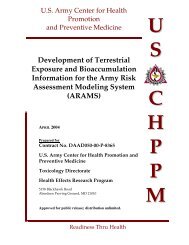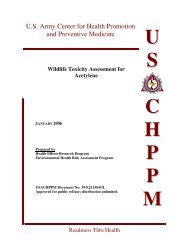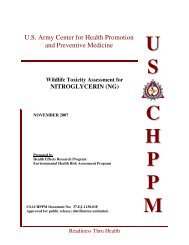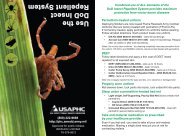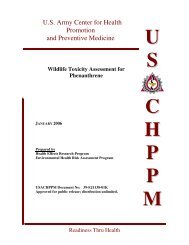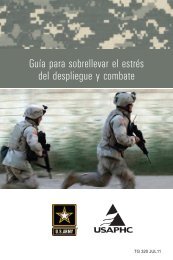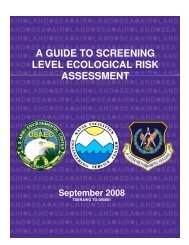Tri-Service Remedial Project Manager's Guide for Ecological Risk ...
Tri-Service Remedial Project Manager's Guide for Ecological Risk ...
Tri-Service Remedial Project Manager's Guide for Ecological Risk ...
You also want an ePaper? Increase the reach of your titles
YUMPU automatically turns print PDFs into web optimized ePapers that Google loves.
This handbook does not, per se, show the reader how to manage an ERA. However, itcan be used by the RPM as a tool to help manage the ERA process. If procedures of thishandbook are followed, the RPM should have a scientifically sound estimate of risk that can beused to make management decisions. DoD personnel should follow managerial guidancerecommended by their respective service.:KDWLVDQ(FRORJLFDO5LVN$VVHVVPHQW"ERA is the qualitative or quantitative appraisal of the actual or potential impacts ofstressors (i.e., contaminants) on plants and animals at a site, other than humans anddomesticated species. A good ERA determines if living organisms and/or their environmenthave been adversely affected, or may be affected in the future due to existing conditions.As early in the ERA process as is feasible, those involved in the ERA’s developmentshould decide what aspects of the environment are valued most highly. Unacceptable changesto the valued aspects of the environment are referred to as adverse ecological effects.Significant adverse effects may trigger a cleanup. The definition of adverse effects will vary witheach site; however, it is not always clear-cut. The definition of adverse effects is <strong>for</strong>mulatedbe<strong>for</strong>e the ERA work plan is finalized. All those involved with site management and regulationshould strive <strong>for</strong> consensus on the definition of adverse effects at a particular site.An ERA then uses in<strong>for</strong>mationfrom scientific studies, surveys, andsite characteristics to estimateecological risk. <strong>Ecological</strong> risk is theprobability or likelihood of adverseecological effects occurring. <strong>Ecological</strong>risk exists when a stressor(contaminant) is in contact with anypart of the ecosystem long enough andat a level that is able to cause anadverse effect. Unlike Human Health<strong>Risk</strong> Assessments, ERAs usuallyaddress risk at the population,community, or ecosystem level. Anecological stressor is something (e.g., achemical compound) that has thepotential to cause an adverse effect.Rule of Thumb #1<strong>Ecological</strong> <strong>Risk</strong> is NOT occurring if:l The stressor is no longer present.l The stressor did not/will not contact asusceptible ecological component.l Contact with the stressor did not/will notoccur long enough or in sufficientintensity (e.g., concentration) to cause anegative effect. Indirect effects (e.g.,altered wildlife habitats) as well as directeffects should be considered.Rule of Thumb #2When no adverse ecological risk exists, the ERA should then stop, even ifstressors (e.g., chemical compounds) are present. If land-use dictates thatecological components will not be present, the ERA should not proceed.ERA activities should:2


